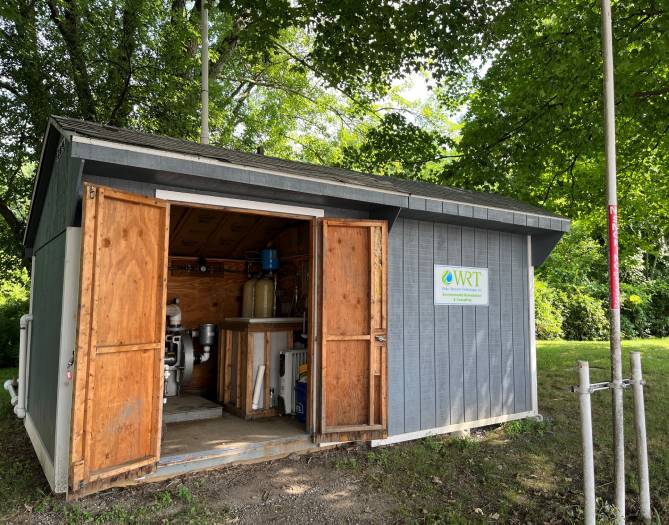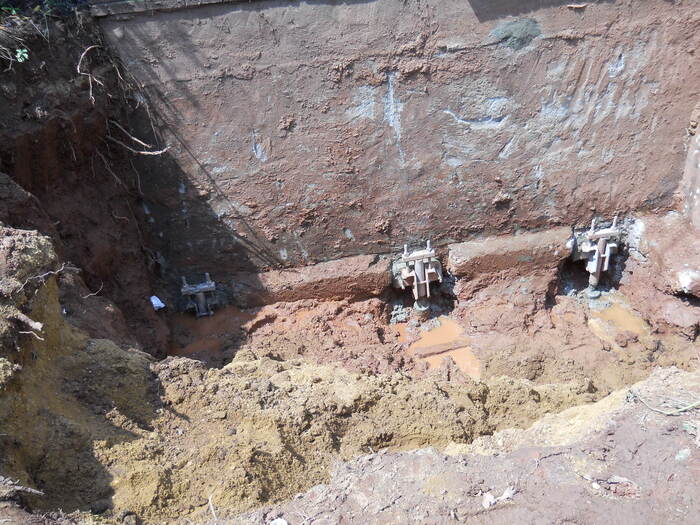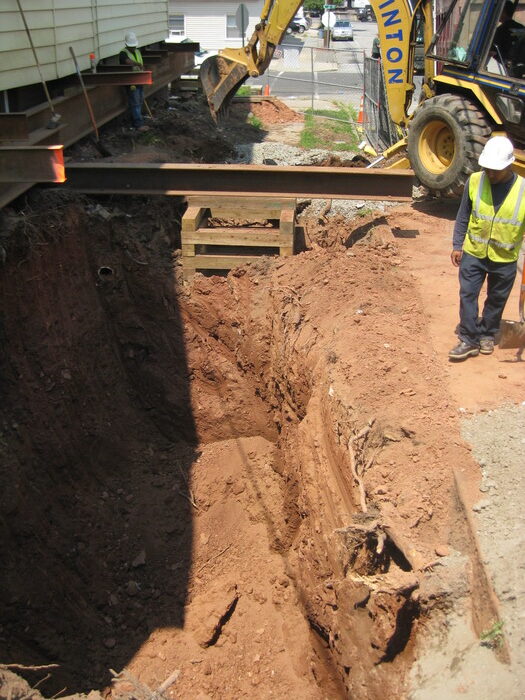Occasionally, a leak is found in the tank. In some cases, contaminated soils or water are encountered in the excavation. WRT is able to assess the contamination and propose a remedial strategy to address the contamination using excavation, ground water treatment, or in-situ remediation.
Sometimes, soil or ground water is contaminated by a leaking oil tank. The most widely used form of soil remediation is to utilize an excavator and remove the contaminated soil. There are many different ways to remediate ground water. A vacuum truck can be utilized to pump the ground water from the excavation during the soil removal process or remove ground water from an installed recovery well in a process called Enhanced Fluid Recovery. Other ways to remediate ground water include a pump and treat system or in-situ chemical or biological remediation.

Excavation
Our experienced equipment operators will remove the contaminated soil from your property and properly manifest, transport, and dispose of the soil at a state permitted facility. Once contaminated soils are fully removed, confirmatory and NJDEP required soil samples will be collected and analyzed by an NJDEP certified laboratory. Once the area is no longer contaminated, WRT will transport clean fill material to the property to fill in the excavation site.

Ground Water Treatment
WRT is best known for its ground water treatment systems. Designed and built specifically for your project, the ground water treatment system removes contamination from the ground water in the best way possible. Some projects require chemical oxidation, others require just a pump, carbon filter, and discharge system. No matter what your project needs, the ground water treatment system will be monitored on a weekly basis for efficiency, and quarterly reports will be submitted to the NJDEP regarding the system's effectiveness.

In-Situ Remediation
Similar to bio-remediation, Soil Vapor Extraction (SVE) is an in-situ process used to enhance the natural remediation of petroleum contaminated soils. The treatment is generally used to remove volatiles in soils from the ground surface to the top of the water table (known as the vadose zone). SVE works by drawing air through an extraction well, which in turn creates a pressure gradient. This induces volatiles to diffuse through the soil to the extraction wells. According to the NJDEP's revised "Guidance Document for the Remediation of Contaminated Soils," SVE has demonstrated its effectiveness for halogenated volatiles and fuel hydrocarbons. SVE is also considered a cost effective treatment option when large volumes of soil or inaccessible soils are involved. WRT has developed an automated SVE system which has been utilized on multiple sites to unobtrusively treat soils which could not otherwise be remediated without costly demolition, excavation, and reconstruction activities.

Structural Support
If contamination has migrated under your house or other structures, your home may need additional support to maintain its stability. Through the use of Helical Piers, Mini-piles, Concrete Underpinnings, or Support Beams, we can make sure your house is structurally sound.
WRT will provide the necessary site assessment and engineering design required to support the house structurally. Structural support mechanisms include Helical Piers, Steel I-Beam installation, or mini-piles. We have performed numerous structural supports and have gotten the process down to a science.

Helical Pier Installation
WRT is an AB Chance certified Helical Pier installer. Helical piers are anchors that are screwed into the ground and bolted or clamped to the foundation of the home to provide stability in less than favorable soil conditions. Helical piers can be installed in limited access areas. They are installed below ground levels so they are unseen when the project is complete.

Concrete Underpinning
This underpinning method is generally applied when the existing foundation is at a shallow depth; however, the method still works very well even at greater depths. This method of underpinning is advantageous due to the simplicity of the engineering, the low cost of labor to produce the result, and the continuity of the structure’s uses during construction. Contaminated soils can be removed from beneath the foundation or structure during or after the installation of the concrete underpins.
Support Beam Installation
Using a coordinated system of steel beams, the building can be supported in place. These steel beams are installed below the structure of the building, using a combination of cribbing, temporary footings, mini-piles, and helical piers for support. Once the support beams are installed, excavators will have access to contaminated areas.

Environmental Consulting Services
We don't just deal in tanks; for our clients, we deal in paperwork as well. NJDEP requires reports to be prepared, especially in cases of remediation, and we will provide these services in a timely, hassle-free manner.
In order to complete your soil or ground water remediation project with the NJDEP, a detailed Remedial Action Report must be submitted to the NJDEP with a UHOT questionnaire and certification. Our staff will provide you with your completed Remedial Action Report and UHOT questionnaire in the shortest time possible. WRT will notarize your UHOT certificate in-house and submit the original document to the state on your behalf. The UHOT program allows the NJDEP to close out the incident report on your property within 2-3 weeks.








